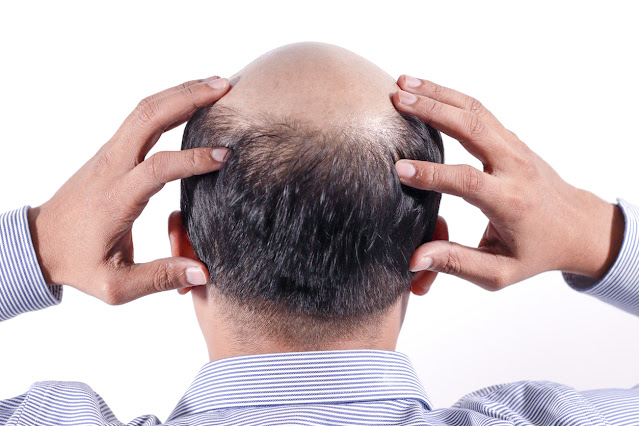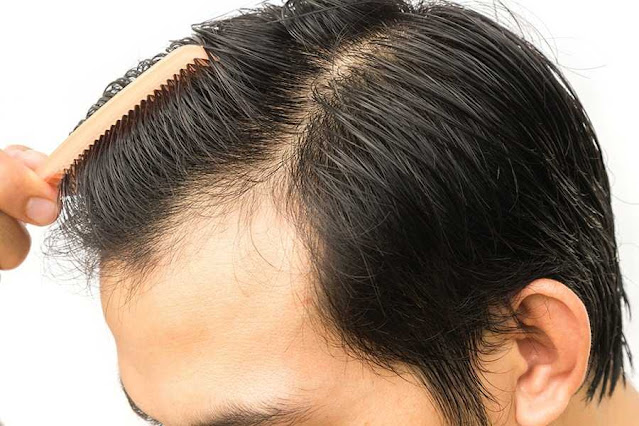One of the most successful therapies for patients suffering from hair loss is hair transplantation. According to the best hair transplant surgeon in Kolkata says, When we look at instances of people's hair before and after a hair transplant, we can see that their hair grows in a healthy way that makes them feel better. Although it is not a long-term treatment for thinning hair, it can help many people regain hair fullness and confidence.
Hair
transplantation is a microsurgical treatment that involves transplanting
healthy hair follicles to regions where the hair follicle is no longer active
and baldness has developed. In other words, for persons who are experiencing
hair thinning or loss, hair transplant surgery may be a viable option. The
patient's own healthy hair is transplanted into the spilt region during hair
transplantation. Hair transplantation is a procedure that is planned and
carried out on an individual basis.
The
patient's hair follicles that are resistant to shedding are collected in the
nape area. Following that, during the hair transplantation operation, these are
implanted into the channels made in the thinning or completely losing areas.
The purpose of this technique is to make hair appear as natural and healthy as
possible.
Male
pattern hair loss is the most frequent kind of hair loss we see today. According
to the best hair transplant surgeon in Kolkata,
The regression of the hairline in the forehead area and the opening of the
apex are the most common symptoms. Besides, male pattern spillage can be seen
not only in men but also in women.
Things to
consider before Hair Transplant:
Hair
Transplant
Hair
transplants are typically more successful than over-the-counter hair
restoration products. But there are some
factors to consider:
1.In
three to four months, anywhere from 10% to 80% of the hair that has been
transplanted will have fully grown back.
2.Like
regular hair, the transplanted hair will thin over time.
3.People
with dormant hair follicles (sacs beneath the skin that used to hold hair but
no longer do) may have less effective transplants, but a study reveals that
plasma therapy can assist up to 75% or more of the transplanted hairs fully
grow back.
Hair
transplants aren't always successful. They're mostly used to restore hair if
you're naturally balding or thinning, or if you've lost hair due to an injury.
Because
most hair transplants use your current hair, they're not as effective for treating persons who have:
1.widespread
thinning and baldness
2.hair
loss due to chemotherapy or other medications
3.thick
scalp scars from injuries
Expectations:
Your
scalp may be very sensitive after surgery. It's possible that you'll have to
use pain relievers for several days. For at least a day or two, your surgeon
will have you wear bandages over your scalp. He might also give you an
antibiotic or an anti-inflammatory to take for a few days. After the operation,
most people are able to return to work in 2 to 5 days. A Hair Transplant is a
procedure that involves transplanting hair from one person to another.
Simply
defined, a hair transplant is a procedure that takes your existing hair and
transplants it to an area where you don't have any. It's usually obtained from
the back of your head, although other regions of your body might also be used.
Before
starting a transplant, your surgeon sterilizes the area where the hair will be
removed and numbs it with a local anesthetic. You can also request sedation to
stay asleep for the procedure.
Reconstructing
The Frontal Hairline:
A
finished hair transplant's frontal hairline is frequently the most visible component.
Hairline requirements, on the other hand, differ from patient to patient.
Some
people want a hairline that is both low and dense. A man in his 30s, for
example, may have modest hair loss (receding temples) and wish to lower his
hairline and fill in his temples.On the other hand, the individual must be made
aware of the possibility that his hair loss would worsen in his 40s, requiring
more hair transplant treatments. As a result, young patients considering a hair
transplant should be aware that their hair loss may persist, necessitating
further and repeat hair transplant treatments.
What To
Expect- Hair Transplant Post-op Timeline:
Hair
transplant surgery is a delicate technique. Following the post-operative
instructions is crucial for attaining the greatest results before and after
hair transplantation. The majority of people notice results six to nine months
after surgery according to the best hair transplant surgeon in India.
For some people, it could take up to a year.

















